We had such fabulous warm weather this past weekend, I just couldn’t help myself. I got out my pots and buckets, soy milk and alum, silk and cotton, and browsed the yard with my clippers.
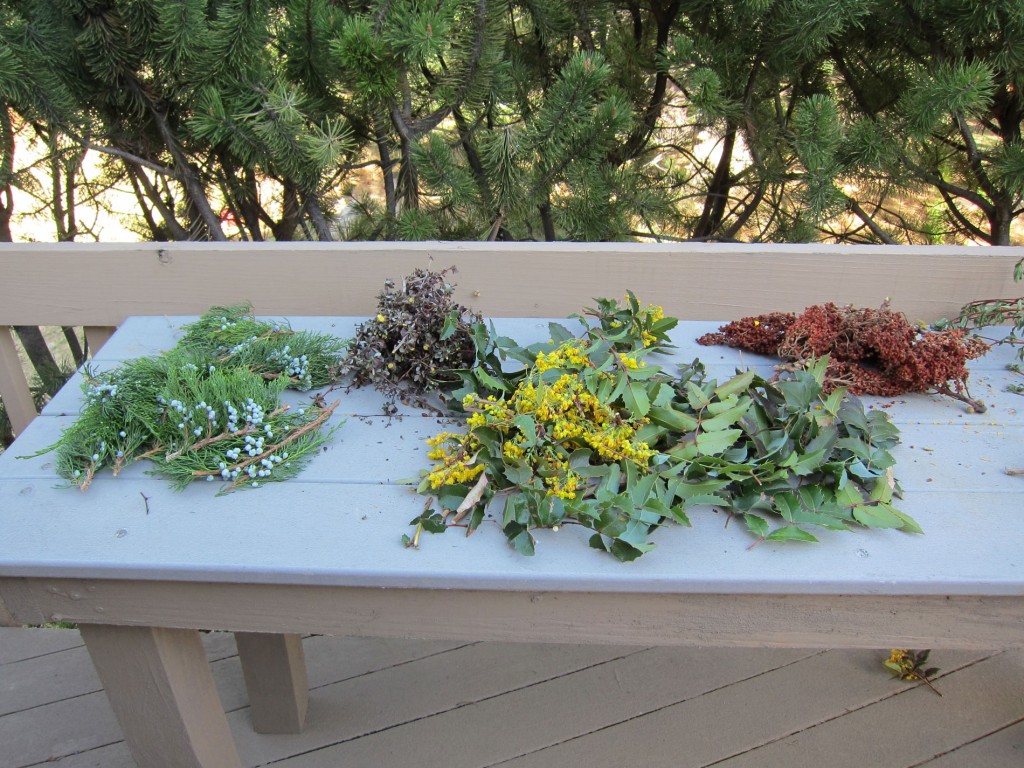
Plants for the dye pots, (from L to R) Juniper, some purple-ish bush from the front yard, holly, sumac berry pods.
In an effort to get the best wash-fast and bright colors, I pre-mordanted the fabrics in 2 different solutions, (1) silk and some cotton in alum and (2) cotton and linen in soy milk.
I dyed 2 color groups – 1 in black bean juice dye (soaked the beans for 2 days, then soaked the fabrics in the bean liquid for 2 days with no heat), and the other was dyed with the juniper berry and leaf dye:
Separately, I bundled up pieces of the various plant materials, wrapped with rubber bands and strings, and steamed them in a covered pot:
The bundles were quite attractive and mistaken for toys by my mischievous little brown-butted Emma girl!

Emma is much more interested in my fabric bundles than her red ball and nylabone, seems she's developed a fabric fetish much like her mom
The bundles are going to be left for awhile…patience in opening them is supposed to bring better results. I also still have several pots “brewing” with more fabrics and am going to see what colors I might be able to get from dyeing with a hot extract of the red sumac berries. I’ll post more pictures when I have some more interesting results to share.
For now, I’m enjoying the range of subtle blue/purple, yellow ocher in this group of alum and soy milk mordanted cotton, linen, and silks.
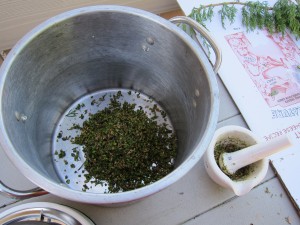
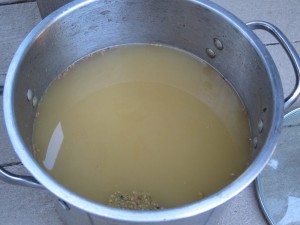
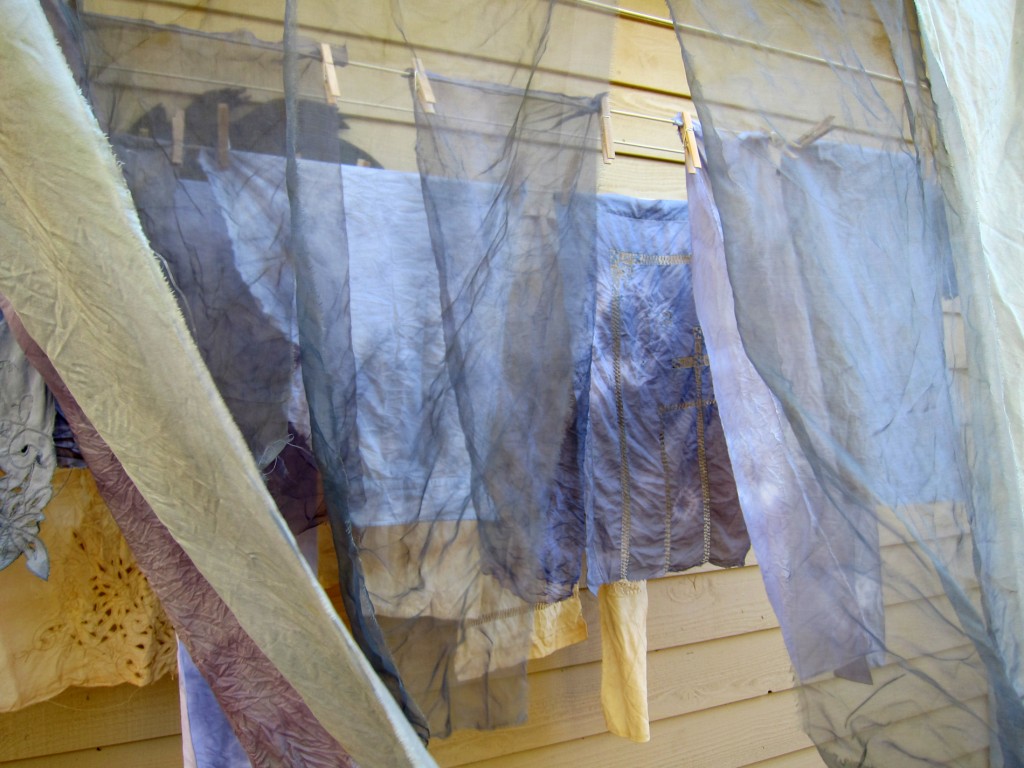
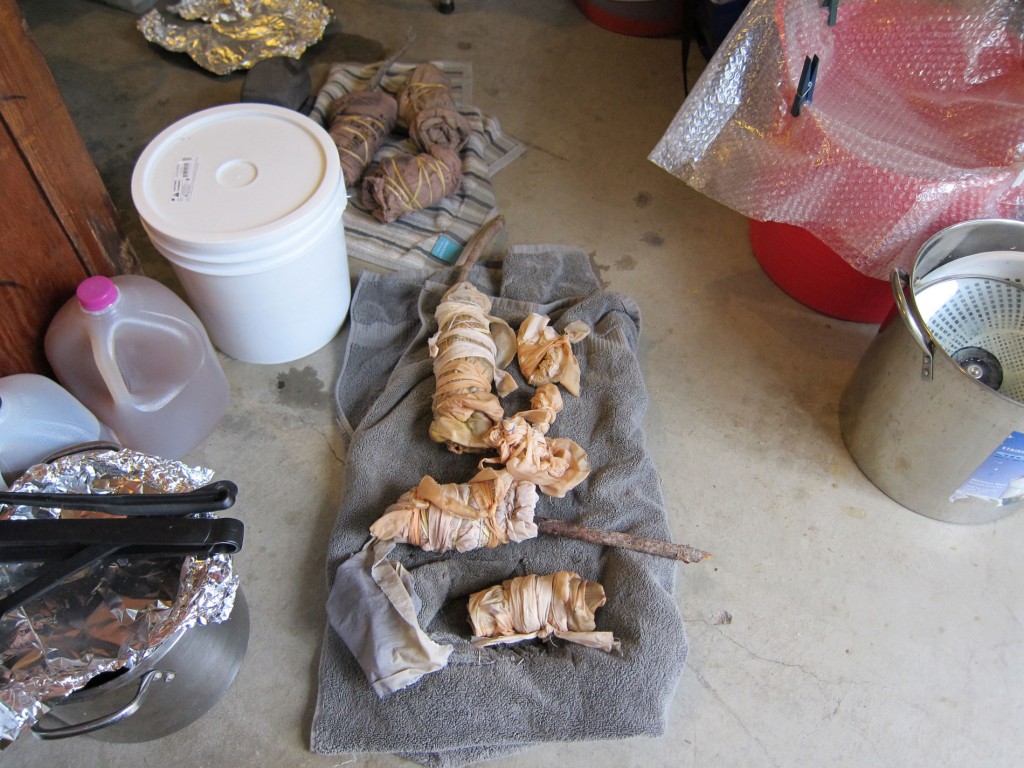

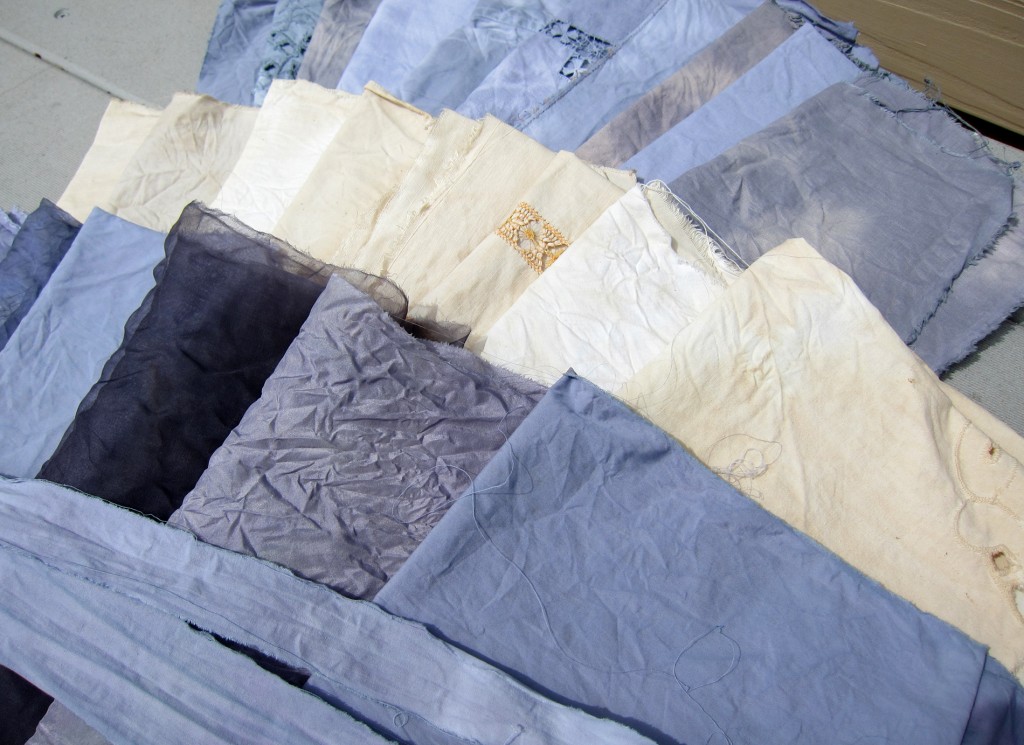


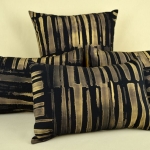
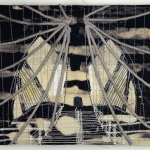

Incredible beauty – what meaningful spring time projects. Love the return to nature,likened to the return of the Soul. And, it just keeps getting better – who knows what creative juices will bring forth?
the particular beauty of using plants for dyes is that all the colours seem to sing together beautifully
Thanks India, yes, I am slowly quietly discovering this, with wonder and amazement of each new cloth bundle unfolding, they are works of art unto themselves. I am also savoring your first book as I explore this new realm – thank you for creating such a soulful guide! I’ve been saving my avocado pits, looking forward to trying some dyeing with them once I have a bunch gathered.
Soy milk is great but i still prefer the old school cows milk since it contains more calcium. *”:.;
Newest article from our online site
http://www.prettygoddess.com
There has been some controversy over protein milk which says that it contains phytoestrogens which can affect the human body. ”
Most up to date blog post coming from our web page
http://www.healthmedicinelab.com/inflamed-taste-bud/
Dear Ayn! please can you tell me in detail the procedure you followed for dyeing with black beans? and how much quantity of water you used to soak 1kg of black beans? did u apply heat?
really curious.
Warm Regards,
From India
Hi Arshi,
For the black beans, I soaked about .5kg in a big pot, with water filled enough to cover the black beans and almost fill the pot (probably about a half gallon of water…i don’t measure amounts of anything when dyeing so it’s not an exact science!). I first let the beans soak for a couple of days at room temperature, then gently heat the pot of beans/liquid for a few hours. Eventually, i poured off the bean juice, saving the beans aside…then returned the bean juice to the pot, added a bit more water as needed to cover fabric once adding fabrics into the bean juice pot and let them simmer for a few hours. Then turned off the heat, leaving the fabrics in the pot overnight as it cooled. Depending on how much deeper you want the color of the fabric to get, you can leave the pot sit with the fabric in it for a longer period of time, it is up to you! Hope that helps! Happy dyeing!
thank you so much for quick response 🙂
I am working on my dissertation where i am dyeing wool and nylon with black bean. I tried it few days back using alum as mordant but result was not as expected. really wish to get this colour!
Could you outline the process you used with your juniper berries? I’m a beginner but we have a very healthy juniper tree in our front yard and I want to give then a try. Did you use fresh berries or dried, what mordant (will they work with no mordant), everything – I want to know it all!
Thanks for posting this; I’ve been hunting everywhere and so far your site is one of the most informative I’ve found.
Hi Heather – I pre-mordanted cotton fabrics in alum/cream of tarter (started with 2 tbs alum, 1 tbs cream of tarter dissolved in a cup of boiling water, then added this mixture to a large stainless steel pot of water and stirred, added the fabric, heated to a simmer, simmer for 1 hr then turn off heat and let the fabric sit in the water overnight). You can get good results from the protein fabrics (silk, wool) with no need for mordant, but mordant is necessary for the cellulose fabrics (cotton, linen) in order to help them have an affinity for accepting the plant dyes.
For the juniper berry dye, I gathered the berries from the bushes, then crushed them with mortar/pestle, put them in a pot and added water (as shown in above photos) and heated them to a simmer, added fabrics and simmered the fabrics in the dye for an hour then turned off and let them sit in the dye overnight. The result was the lovely yellow ochre shades shown in the photo above.
Have fun experimenting with your junipers!
Just to clarify, the ocher came from juniper and the blue purple came from black beans?
Thanks so much.
Yes, that is correct. For the black beans, I soaked dried beans in water overnight, then heated them to simmer for a few hours to release their color into the dye liquid. Strain off the beans (for eating), then use the bean juice as a dye, simmer fabric in it for awhile, turn off heat and let fabric sit in the dye solution until it reaches a shade you are happy with.